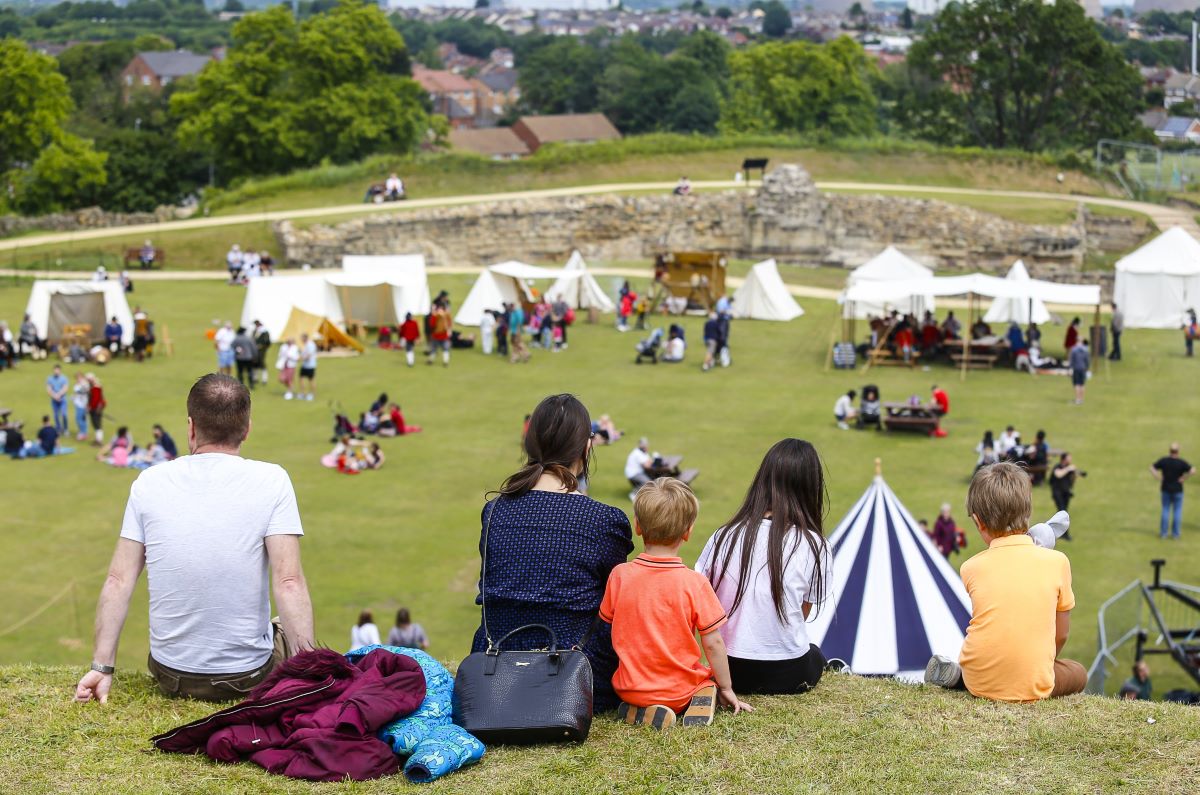
Civil War event held at Pontefract Castle
Photo: Sarah Zagni
Culture and place: Why we need to look beyond cities
Arts and culture are integral to shaping the places we live. We now need to understand the effects cultural placemaking practices have on our towns, provinces and rural areas, argues John Wright.
Until recently, the term ‘placemaking’ was only used by a small number of specialists and academics. Its roots lie in 1960s urban design and city planning. Yet, the idea of placemaking has gained traction over the past couple of decades, becoming a buzzword in policy circles. This was notable in the US during the Obama-led administration and more recently in the Department of Culture, Media and Sport’s 2022 Levelling-Up inquiry.
So why has it become such a popular term?
One reason lies in the lack of formal definition. Every arts organisation, cultural practitioner, researcher and policymaker has a different version of what they think it means. This ‘fuzziness’ has led to all manner of projects, agendas, strategies and policies being huddled under the umbrella of placemaking.
In short, the term is contested and can be as much about who is adopting it as the processes involved. For example, a town planner might use it to describe a regeneration scheme. Whereas a community might use it to describe how their interventions have changed how their area looks, feels and functions.
What the research tells us
Over the last year, the Centre for Cultural Value (the Centre) has been looking at the relationship between culture and placemaking as part of our engaged research process. We asked cultural sector practitioners, researchers and policymakers what they wanted to know about placemaking. This scoping process led to a research digest, which surveyed 126 studies and drew out the key insights.
The review found grassroots approaches to placemaking can have more positive socio-economic outcomes than initiatives developed by non-local stakeholders. In this context, brokering collaborations between stakeholders is a vital part of placemaking practice. This requires an understanding of power dynamics both within and between groups, particularly as top-down approaches can become exploitative and risk alienating the very communities they seek to engage.
Another key finding was that the literature is overwhelmingly focused on urban and city environments, with only 13% of studies focused on towns, provinces and rural areas. It’s not simply that researchers have focused mainly on cities, but that the language used to talk about culture and placemaking is often city-centric.
Whether referring to clusters, quarters, districts or corridors, these terms are used to group, connect and describe areas associated with city or urban branding and are predominantly geared towards generating economic growth. Perhaps this isn’t surprising given the notion emerged from city and urban planning debates.
Disconnect between policy, research and practice
These findings suggest there is a problematic disconnect between policy, research and practice regarding culture’s relationship with placemaking.
Communities outside urban centres are often neglected by cultural strategies, despite the fact that placemaking practices are happening in towns, provinces and rural areas. For example, in the work of the Stove Network based in the Scottish town of Dumfries, In-Situ based in the predominantly rural borough of Pendle, or the various iterations of community cinema based in rural villages in Norfolk run by Creative Arts East Screen, among countless others.
There are also major research studies in adjacent or interconnecting fields such as the Understanding Everyday Participation (UEP) project, which explored, through fieldwork in villages and towns, how everyday creativity and culture play a role in our localities. The And Towns project has shed light on how people feel about their local area.
It is crucial we take a more considered and joined-up approach to thinking about what cultural placemaking looks like in towns and rural contexts. How can we best capture and share the learning from existing projects? And what can placemaking look like where the infrastructure may be less developed, where partners have less access to resources and shared spaces, and where geography can be a barrier to collaboration and engagement?
Developing this knowledge has a potential impact on devolution agendas in England that, so far, have been overwhelmingly city-centric and urban in focus. Moving beyond city-centric logic and language is vital for this to begin without falling into the same trap of creating an oppositional set of terms for rural ecologies.
Getting specific
Of course, funders and policymakers need to consider the specific nature of a place alongside trends and similarities; places are not neutral nor are they fixed. Instead, they are a constant interplay between people, environments, histories, cultures and traditions.
This has practical implications for policy and funding because it suggests the need to decentralise decision-making and move towards more local participatory funding structures. This shift will ensure communities across the country are better placed to benefit from the value of cultural engagement and the creative economy.
With this in mind, the Centre is supporting the development of local and regional data and evaluation strategies. As a research partner, we are also working with Culture Commons in its open policy development programme on the future of cultural devolution.
With both major parties having pledged to enhance devolution, there is now a real opportunity to look at ways to enhance the creative ecosystem. At the Centre, we believe that working closely with local and regional policymakers to support a more nuanced understanding of placemaking in different contexts will ensure we fund place-based cultural activity ethically and effectively.
John Wright is Post-Doctoral Research Associate at the Centre for Cultural Value.
![]() culturalvalue.org.uk/
culturalvalue.org.uk/
![]() @valuingculture
@valuingculture
Read the Centre’s new research digest on culture and placemaking.
This article, sponsored and contributed by the Centre for Cultural Value, is part of a series supporting an evidence-based approach to examining the impacts of arts, culture and heritage on people and society.
Join the Discussion
You must be logged in to post a comment.